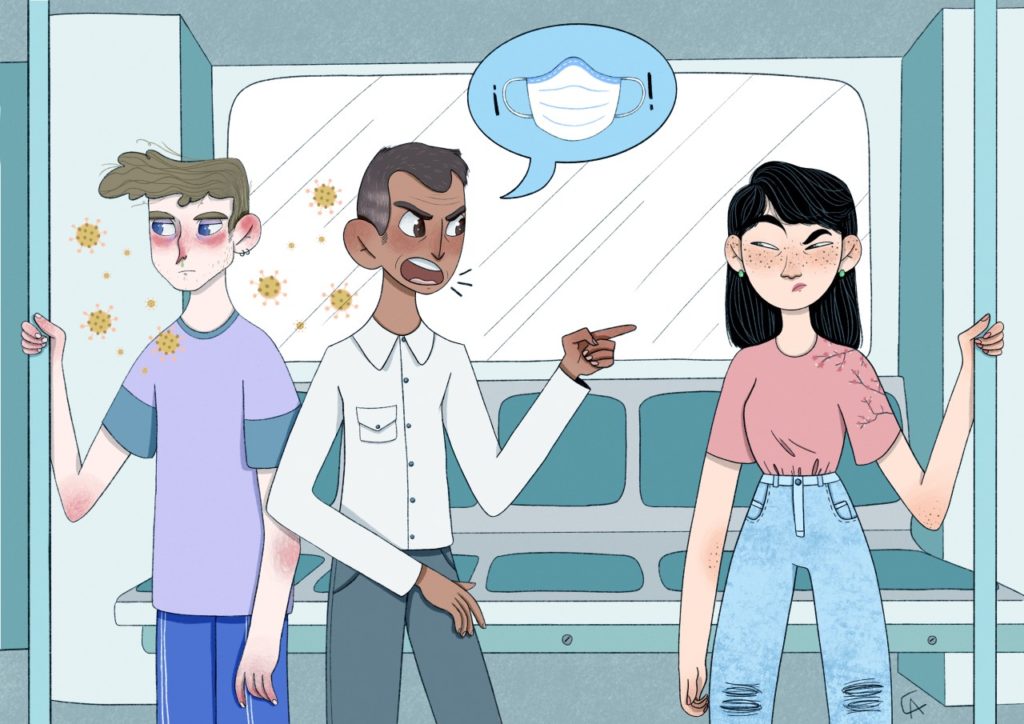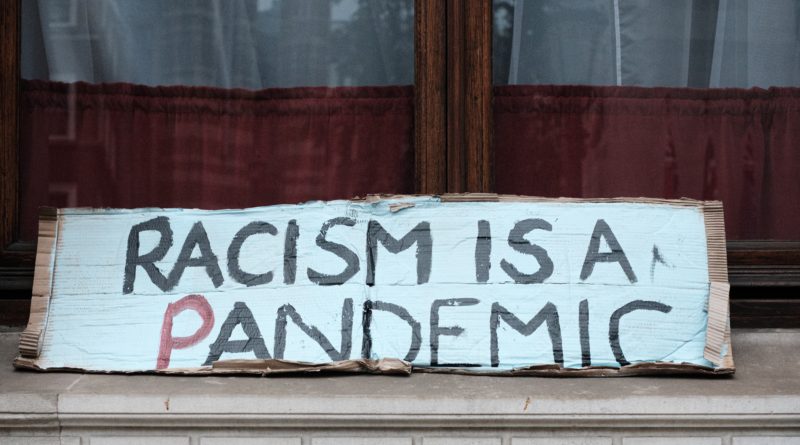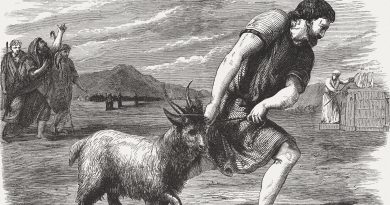‘Coronavirus’ Is The New Asian Racial Slur
Governments should take urgent steps to prevent racist and xenophobic violence and discrimination linked to the Covid-19 pandemic while prosecuting racial attacks against Asians and people of Asian descent, Human Rights Watch said today. On May 8, 2020, United Nations Secretary-General Antonio Guterres said that “the pandemic continues to unleash a tsunami of hate and xenophobia, scapegoating and scaremongering” and urged governments to “act now to strengthen the immunity of our societies against the virus of hate.” Government leaders and senior officials in some instances have directly or indirectly encouraged hate crimes, racism, or xenophobia by using anti-Chinese rhetoric. Several political parties and groups, including in the United States, United Kingdom, Italy, Spain, Greece, France, and Germany have also latched onto the Covid-19 crisis to advance anti-immigrant, white supremacist, ultra-nationalist, anti-semitic, and xenophobic conspiracy theories that demonize refugees, foreigners, prominent individuals, and political leaders. All these acts have led to coronavirus being referred to as an asian racial slur.
Racism and physical attacks on Asians and people of Asian descent have spread with the COVID-19 pandemic, and government leaders need to act decisively to address the trend. Governments should act to expand public outreach, promote tolerance, and counter hate speech while aggressively investigating and prosecuting hate crimes.
Also read Hacktivist Group, Anonymous
Tip of the iceberg
Since the outbreak of the pandemic, Asians and people of Asian descent have been targets of derogatory language in media reports and statements by politicians as well as on social media platforms, where hate speech related to Covid-19 also appears to have spread extensively. US President Donald Trump’s use of the term “Chinese virus” and Secretary of State Mike Pompeo’s use of the “Wuhan virus” may have encouraged the use of hate speech in the US. Although by late March Trump stepped back from using the term and issued a tweet in support of “our Asian-American community,” he has not directed any specific governmental response toward protecting Asians and people of Asian descent.
History tells us this is not the first time that fear of disease has led to outbreaks of anti-Asian racism. Underlying prejudice against Asian communities has been a staple feature of North American society since the first Chinese workers arrived in the mid-19th century.
Looking back at these outbreaks of discrimination is a sobering lesson of the consequences of racial labels for the disease and it being an Asian racial slur!

Coronavirus does not justify racism or xenophobia
There have been reported cases, particularly in North America, Europe, and Asia, of people making racist jokes related to Chinese people and the Coronavirus, putting Asians in quarantine solely on the basis of being Asian, writing racist headlines, refusing to serve Asians, and being violent towards Asians, especially towards Chinese people. There are also rising sinophobic/anti-Asian sentiments in countries outside these regions.
Also, read Impact Of COVID-19 On Education Sector
Asian Racial Slur by Mainland Indians: Chinky-momo-corona!
The ongoing Covid-19 pandemic brought to the fore a novel racial epithet for those with Mongoloid phenotypes in India, affecting the migrants from the North East. Many of them who were already used to the racial slurs ‘chinki’, ‘momo’, or ‘Chinese’; now became ‘corona’. Incidents of stigmatizing hapless citizens appeared in the press and social media.
This could take the shape of physical intimidation in excluding the perceived ‘carriers’. A female Mizo student in Delhi spoke to us over the phone and shared her experience during the initial days of the pandemic:
It was before the lockdown during March when I went to my university to submit my assignment. Three men in a bike constantly followed me shouting “corona, corona” and they were teasing and laughing at me. They were scary and I preferred not to respond although [I] felt like making a video. But they could have easily snatched my phone. I had to constantly avoid them by walking fast, taking a different lane.
The student further reflected how calling names has been part of the daily lived experience of North Easterners in Delhi:
You may find [it] strange but it’s nothing different when they call me ‘corona’. [I] feel, they are just using a different slur instead of ‘chinki’. Actually, we were never respected by them [mainstream Indians]. They are now associating us with some ‘germ’ or ‘virus’ which only shows how they really feel about us. Before Corona North East women were seen as ‘walking prostitute chinkies’ and now we are ‘walking deadly virus’. Either way, we need to be purged or eliminated from their society.
This sense of desperation to return home was common. Another student from Nagaland residing in Delhi expressed similar fears when we called her:
I have stopped going out of my flat even for essentials. News about increasing racial attacks against North Eastern people in various parts of the country not only makes me scared but my parents too at home. They remain worried about my wellbeing and have asked me not to go out at all. I do online shopping now which I find comparatively expensive, but it’s okay since spending a little more money is better than becoming a victim of a racial attack. People have become crazy here. I would go back once the special trains are finalised […] I want to reach home.
“Us” and “Them”
These incidents pinpoint how the police officials instead of acting as enforcers of the law, become the ‘carriers’ of racial evils that afflict society and in the process create an ‘us’ and ‘them’ division. Hasn’t institutional racism, thereby, become a part of the system?
Here’s another example of Asian racial slur
When a 20-year-old student hailing from Nagaland went to buy groceries in Mysuru with friends, they were prevented from entering the store on the presumptive understanding that they were not ‘Indian’ but ‘Chinese’. They produced their Aadhaar cards as proof of their Indian nationality but were still refused service.
In another bizarre incident, six young women from Nagaland working in a BPO in Ahmedabad were ‘mistaken’ as Chinese and taken to a hospital and not released even after testing negative for the Coronavirus. This incident occurred after a complaint that these women were infected with the virus. One of the victims exclaimed about “how looking different may lead one to be treated differently.”
Why the “other”
Epidemics, otherwise biological processes, can carry cultural overtones that often generate racial prejudices by constructing the perceived carrier individuals and communities as the ‘other’ who is to be excluded from ‘sanitized’ spaces. For various reasons, othering becomes a potent tool during pandemics in calibrating relations amongst individuals and communities within a society.
Lack of cultural understanding among a major section of the Indian mainland’s mainstream societies makes them interpret any difference […] through a racial lens. This ultimately manifests itself in racial slurs.
Firstly, it provides an alibi in identifying scapegoats. David Arnold (1986) writing on cholera epidemics in colonial India, noted that the scapegoat was often “a low caste or a tribal woman, or a prostitute, who was driven out of the village to symbolize the expulsion of the disease from its boundaries.”
Secondly, it provides a semblance of (false) knowledge of understanding the novel virus by analyzing the ‘other’ as the perceived carrier.
Thirdly, it enables communities to shift the blame on the ‘other’ and their ‘unnatural’ way of life by associating them with the disease; while the sanitized ‘rest’, who do not adhere to ‘unnatural’ ways, potentially remain at a lower risk. Fourthly, novel viruses and accompanying epidemics come as a shock as we attempt to adjust to the changed ‘normal’ and adjustment strains the fault lines of the pre-epidemic social order. As Henri Lefebvre (1991) reminds us “in space what came earlier continues to underpin what follows”, racism, communalism, and other forms of ‘otherization’ get reactivated until a known etiology emerges.
It began in India by stigmatizing those bearing Mongoloid phenotypes, along with their food, lifestyles, and manners. The absence of the Mongoloid phenotypes in Indian imaginaries even necessitates a mainland Indian face to play the lead role in a biopic on the Manipuri boxer Mary Kom because North Eastern people ‘don’t look Indian enough’.
Lack of cultural understanding among a major section of the Indian mainland’s mainstream societies makes them interpret any difference — phenotypes, attire, hairstyle, food habits, and lifestyles of the migrants — through a racial lens. This ultimately manifests itself in racial slurs.
As migrants from the North East reach new destinations in mainland India, they are exposed to newer social spaces. Adjustment and adaptation become buzz words for co-existence, a complex process dependent on both the migrants and locals in the host societies. Since the migrants are culturally and racially distinct, they are more exposed to social challenges in terms of language, food habits, attire, and lifestyles vis-à-vis others in the host societies. These differences along with their Mongoloid phenotypes attract unwanted gaze, often leading to prejudices, stereotypes, and presumptions about their personalities. These create unseen borders, which are more felt than visualized, often embedded in racial undertones.
From the Team of WarPaint Journal, We stand together, against racism and especially this new trend of Asian racial slur. Coronavirus definitely isn’t seeing race, religion, or any of the ethnic diversification we have created.
References:
Arnold, David. 1986. ‘Cholera and Colonialism in British India.’
Past & Present. 113: 118-51. Karlsson, Bengt G. and Dolly Kikon. 2017.
‘Wayfinding: Indigenous Migrants in the Service Sector of Metropolitan India’.
South Asia: Journal of South Asian Studies 40 (3): 447–62.
Lefebvre, Henri. 1991. The Production of Space.
Migration, identity and conflict: Lived experience of Northeasterners in Delhi.
New Delhi: Rawat Publications.





Pingback: State and National Lockdown in India - WarPaint Journal